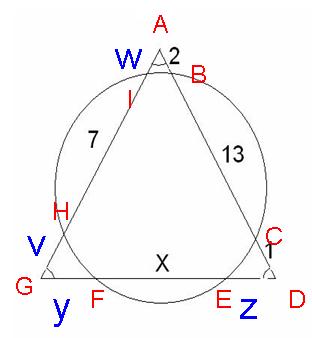-
Posts
162 -
Joined
-
Last visited
Content Type
Profiles
Forums
Events
Everything posted by s pepperchin
-
Bill Bryson's A Short History of Nearly Everything is good also.
-
The Earth itself is not a perpetual motion machine for one simple reason, it is always being bombarded with energy from the sun. A perpetual motion machine has zero change in its total energy. This is not true for the Earth.
-
The friction is dependent on the normal force and the force vectors. I always thought that that would explain why the surface area is not a part of the equation.
-
Do you discuss only science with everyone you meet and if not what do you discuss with them? I am a physicist and I felt the same way in college, however now that I know a lot of people who are not physicist or even scientist I can use that information to have discussions with them. An example of this is that my fiance is a history teacher and on a few occasions I have been able to offer suggestions for her curriculum based on classes that I took in college. So although you don't like taking the other classes it makes you a well rounded person who people will want to carry on a conversation with.
-
you can only say that it is always positive if you take the square root then square it.
-
It is very true. I tutor high school kids in math so I have copies of the textbooks and it is a true theorem.
-
I started out by adding some labels to your diagram. The red letters are the intersection points of the triangle and the circle and the blue letters are variable for the unknown segments. The length of each of the sides are the same since the triangle is an equilateral. [math]AD = DG = GA = 16[/math] We will need that later. We will start by solving for W: We can use the theorem that says for two secant lines that intersect outside of a circle the product of the secant line and the exterior segment of one line are equal to the product of the secant line and exterior segment of the other line. [math](AH)(AI) = (AC)(AB)[/math] [math](7+w)(w) = (15)(2)[/math] This gives us:[math]w=3[/math] since [math]v+7+w=16[/math] [math]v+7+3=16[/math] [math]v=6[/math] using the same principle as above for the secant lines from the other angles of the triangle we get: [math](GH)(GI)=(GF)(GE)[/math] [math](6)(13)=(y)(y+x)[/math] [math]y^2 +xy=78[/math] eqtn 1 and [math](DC)(DB)=(DE)(DF)[/math] [math](1)(14)=(z)(z+x)[/math] [math]z^2 + xz =14[/math] eqtn 2 Solving the length of the side [math]x+y+z=16[/math] for z [math]z=16-x-y[/math] eqtn 3 plug into eqtn 2 [math](16-x-y)^2 + x(16-x-y) =14[/math] gives us [math]y=10-\frac{x}{2}[/math] plug this into eqtn 3 [math]z=16-x-(10-\frac{x}{2})[/math] [math]z=16-x-10+\frac{x}{2}[/math] [math]z=6-\frac{x}{2}[/math] plug these eqtns for y into eqtns 1 [math]y^2 +xy=78[/math] [math](10-\frac{x}{2})^2 +x(10-\frac{x}{2})=78[/math] gives us [math]x=2 \sqrt{22}[/math]
-
I use it on a regular basis but mostly for creating graphics. At this point however most of my graphics have been fairly basic. If there are others who are a little more experienced I would be glad to discuss some things with them. There is a mathematica forum however it isn't as nice as here.
-
It is an equilateral triangle but the numbers givin aren't the length of the whole side but rather the length of the part of that side which falls within the circle.
-
I have that book and after looking over that section it apperrs to me that you are on the right track.
-
If you want to do an interesting experiment with polarization, use corn syrup. In one of my lab classes we set a polarizing filter on an overhead projecter, then we poured corn syrup into a shallow glass dish placed on top of the filter, then we would hold the other filter above it and look at the light passing through all three as it is projected on the wall. Ask your teacher about it and maybe he will show you.
-
Do you mean grounded? If so what is somethings potential difference when it is grounded?
-
C Sharp express is available for download from microsoft. If you are interested in prgramming then you should learn C Sharp. It is easier to use than C. I have been learning C Sharp and I learned a little C a few years ago. C Sharp is easier than C and you can find books that will help you learn it. Try Barnes and Noble or amazon.
-
thanks for catching that.
-
[math]y=a^x[/math] as has already been stated [math]a^x=e^{xlna}[/math] we can seperate the exponent into [math]y=e^xe^{lna}[/math] and we know [math]e^{lna}=a[/math] so that makes our equation for y [math]y=ae^x[/math] and we know that the derivative of [math]e^x[/math] is [math]e^x[/math] so that [math]\frac{dy}{dx}=ae^x[/math]
-
How much area are you expecting to cover with this device?
-
the other thing to remember about college is that most schools will give a math placement test to determine what math you have mastered. Usually by the time you are heading into college you have a good enough grasp of algebra, geometry and trig so that you can start with calculus. If however you are going to be a math major than you may take advanced classes that touch on aspects of these subject.
-
I don't think so the normal force is in the opposite direction as the centripital force.
-
I understand the anology, I do have a B.S. in Physics.
-
If you are curious about college math than you should look at some school websites. You can usually look at what kinds of classes they offer whith breif descriptions.
-
What you said is accurate when it comes to an anology to gravity however this example doesn't have a device to introduce cetripital force. Unless of course you have a frictionless elastic sheet so that giving a small mass an initial velocity would keep it moving.
-
The problem is that you are using the wrong equation. [math]F_c=ma[/math] [math]F_c=ma_c[/math] is correct but to figure out [math]\mu[/math] you use: [math]F_f=\mu F_N[/math] where [math]F_N=-F_c[/math] and in order for the person not to slide down the frictioanl force must be equal and opposite to the force of gravity. [math]F_g=\mu (-F_c)[/math] [math]m g=\mu (-ma_c)[/math] [math]g=-\mu a_c[/math] [math]\mu = \frac{-g}{a_c}[/math] plug in the numbers [math]\mu = \frac{-(-9.8\frac{m}{s^2})}{95.5377706\frac{m}{s^2}}[/math] [math]\mu = .1026[/math] It is easier to see if you draw it out as you go though.
-
If you need help with homework you should list the questions and the work you have done so far. Also you should be posting under homework help.



